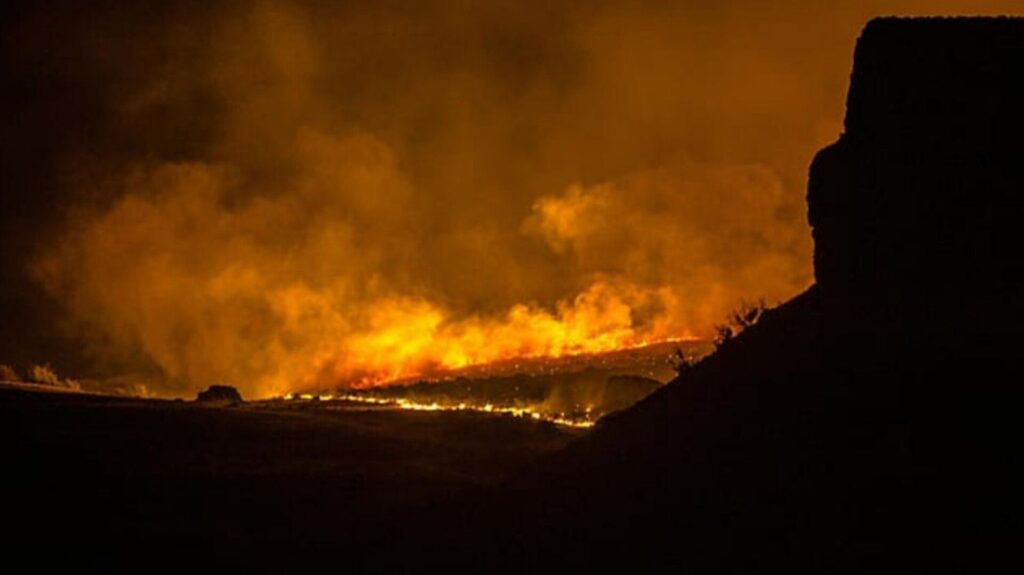Now the heat of the earth is not a fantasy, it has become a dreadful truth recorded in the figures. According to the World Meteorological Organization (WMO )’s “State of the Global Climate 2023”, 2023 was the hottest year ever. The average global temperature was recorded above 1.45 ° C (± 0.12 ° C) above the pre-industrial era (1850–1900). This is not only a warning recorded in scientific language, but has now become a daily reality of our living experience. Fire of forests in Europe, drought in Africa, icy storms and cyclones in the US, and Asia – especially in India – waves of frightening summer… all these are symptoms of the Earth’s extent. The temperature in Delhi is close to 50 ° C, landslides and avalanches due to melting snow in Uttarakhand, and the intensity of cyclones in the Bay of Bengal – these are not the gestures. Now the Earth is not giving us the signal silently – she is making noise, screaming, but are we listening?
In the last hundred years, in the definition of development we coined, we considered nature only a ‘object of use’. We pulled water from the river, wood from the forest, mineral from mountain, oxygen from the air – and returned in return only plastic, chemicals, and carbon. According to UNP, the United Nations environmental agency UNEP, humanity is now extracting 1.7 times more resources from Earth every year as it can rebuild. This is called ‘ecological overshoot’. Every year about 10 million hectares of forests are cleaned. According to WWF’s Living Planet Report 2022, 69% of the biodiversity of the Earth has ended since 1970. The seas are floating 150 million tonnes of plastic and estimated that by 2050 there may be more plastic than fish. Is this development? Or the destruction that we started like a celebration?
But this is not only a policy or mistake of governments – it is also the result of our habits and greed at the social and personal level. We use an average of 50–60 kg of plastic every year, most of which are thrown away after being used once. Our fashion habits, every season of new clothes and trends – has become one of the biggest consumption of environmental resources. The fashion industry alone contributes 20% of global water pollution and about 10% of carbon emissions (UNEP). Talking about technical equipment – mobiles, laptops, electric cars – metals like cobalt and lithium are extracted from the mines of Africa and Latin America, where child labor and environmental exploitation are often occurred. That is, our brightness is being bought from the darkness of someone else’s life. It is not consumed, it is exploitation – and the Earth is paying it.
Talking about India, the situation is even more worrying. According to the Central Pollution Control Board (CPCB) and ‘State of Environment Report 2023’, 279 of India’s 603 rivers are seriously polluted. Ganga, Yamuna, Gomti – The streams of reverence are now carrying the weight of sewage and industrial waste. According to 2023 reports by WHO and IQAIR, 14 of the 20 most polluted cities in the world are in India, including Delhi, Ghaziabad, Lucknow, Patna, Kanpur. The air of Delhi is 20 times more polluted than the standards of WHO. Himalayan region – which was called Devbhoomi – Today is being demolished due to unscientific construction, encroachment and uncontrolled tourism. Joshimath’s collapse, Kedarnath’s frequent influence, and landslides in Uttarakhand-Himachal-all these are a living testimony of our wrong development policies.
The government has made efforts – it cannot be denied. India targeted the ‘Net Zero Carbon Emission’ by 2070 at the COP26 conference in 2021. Many schemes were launched from ‘Namami Gange’ to ‘Jal Jeevan Mission’ and ‘National Solar Energy Mission’. The country is now in the top 5 solar power producing countries in the world. But the question is whether these plans are giving results, or only presentation? Is the Ganges really clear? Has the ban on plastic became a land reality? Do our urban and rural planners prioritize environmental balance? If not, the policies should be evaluated honestly. As long as the environment will be seen as ‘barrier’ in the model of development, permanent solution is not possible. Now the time has come for governments to adopt ‘Green GDP’ – where development is calculated with environmental health.
Now we have to decide whether we will move towards life or towards destruction. In the education system, the environment should be added like a rite, not just a subject. In every city plan, green belts, protection of water sources and pre -environmental assessment of construction should be mandatory. Traditional water conservation practices and organic farming were encouraged in rural India. Rape of mountains should be stopped in the name of tourism and urbanization. And the most important – the habits of consumption at the person level changed. Buy less, use repeatedly, and adopt ‘permanent lifestyle’. Earth is not an ‘object of use’ – this is the basis of our life. If we still have not heard – then the next generations will curse us.
